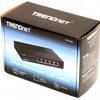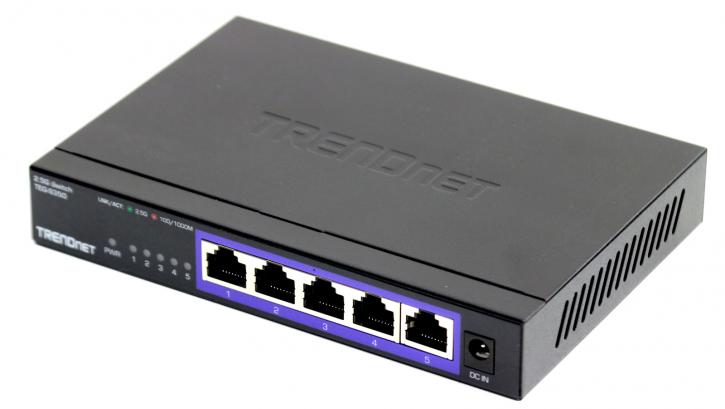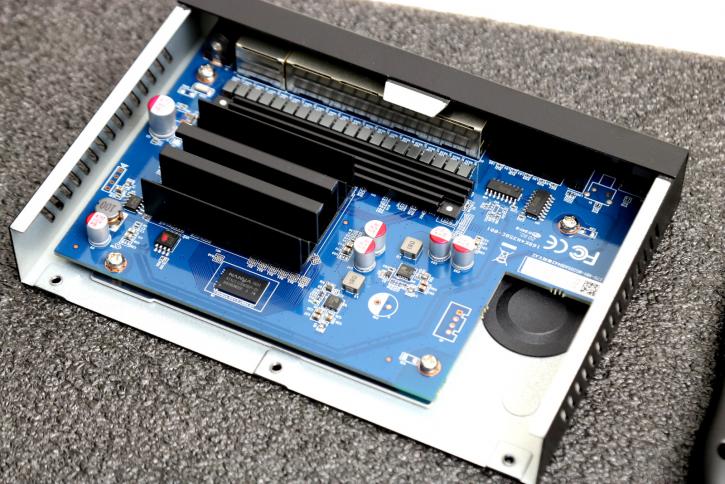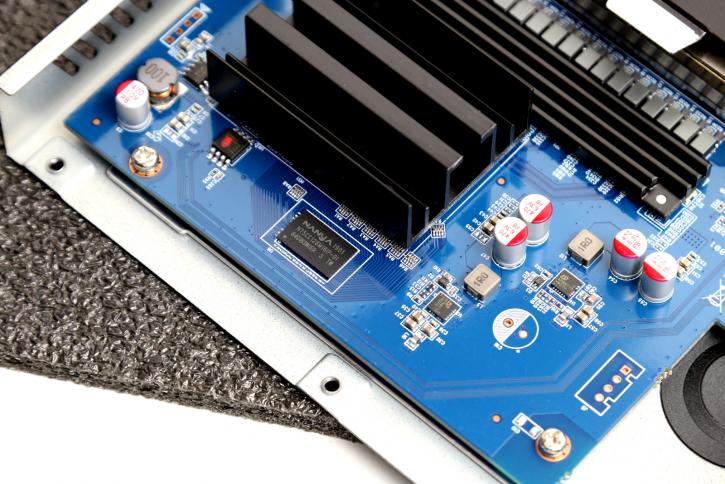Ports 'n Cooling
Count 'em--5 ports
The little unit allows 5 of its ports. This is an unmanaged switch, we call these dumb switches. So there's no added core logic to manage or prioritize ports or even threat protection. You plug it in, connect, and are good to go. This however does mean it does not offer separated VLAN's or Virtual Local Area Networks. A computer on a VLAN will not be allowed to talk to another computer on a different VLAN. For that, you'd need to shift functionality to your router.
For a little switch intended for general office use, you wouldn't want or even need to use VLAN. It is also improbable that a single computer would be in its own VLAN. More likely, you'd put a hub or another switch at the end of the VLAN to hook up an entire department full of computers.
Good to know is that this unit is passively cooled, and trust me when I say, the high you go up in Gigabit performance, the hotter things get. We've seen 10G ports reach 80 Degrees C, that's not a joke. However at 2.5G things are a bit more manageable, it still needs to be cooled though, ergo the big heatsinks that you can see inside.
Specifications
- Industrial Standards: IEEE 802.3 IEEE 802.3u IEEE 802.3x IEEE 802.3z IEEE 802.3ab IEEE 802.3az IEEE 802.3bz
- 5 x 2.5GBASE-T ports (100Mbps/1Gbps/2.5Gbps)
- LED indicators
- Ethernet: 10Mbps (half duplex), 20Mbps (full duplex)
- Fast Ethernet: 100Mbps (half duplex), 200Mbps (full duplex)
- Gigabit: 2000Mbps (full duplex)
- 2.5 Gigabit: 5Gbps (full duplex)
- Switching Capacity: 25Gbps
- RAM Buffer: 1.5MB
- MAC Address Table: 16K entries
- Forwarding Rate: 18.6Mpps (64-byte packet size)
- Jumbo Frames: 12KB
Judging from what we see the switch implements a switching strategy called store-and-forward. It's the slowest of the three (Cut-Through and Fragment Free are the other two), where it copies an entire frame into its buffer and computes a CRC. This causes higher latency. It then looks up the destination address in its switching table and figures out which port to send it out, and finally, sends it out. In case if you're wondering, Cut-Through is the fastest but is trading speed for error checking.
Yes, it has DRAM. Most switches are output buffer oriented, just for the speed of it, so once a packet goes through the crossbar, the switch can't tell which port sent it to shut it up. The switch might have flow control built-in, but you'll never see it work.




